必修4 Unit 4 Body Language Reading 课件(共40张PPT)
文档属性
| 名称 | 必修4 Unit 4 Body Language Reading 课件(共40张PPT) |  | |
| 格式 | ppt | ||
| 文件大小 | 3.2MB | ||
| 资源类型 | 教案 | ||
| 版本资源 | 人教版(新课程标准) | ||
| 科目 | 英语 | ||
| 更新时间 | 2020-11-15 17:40:29 | ||
图片预览


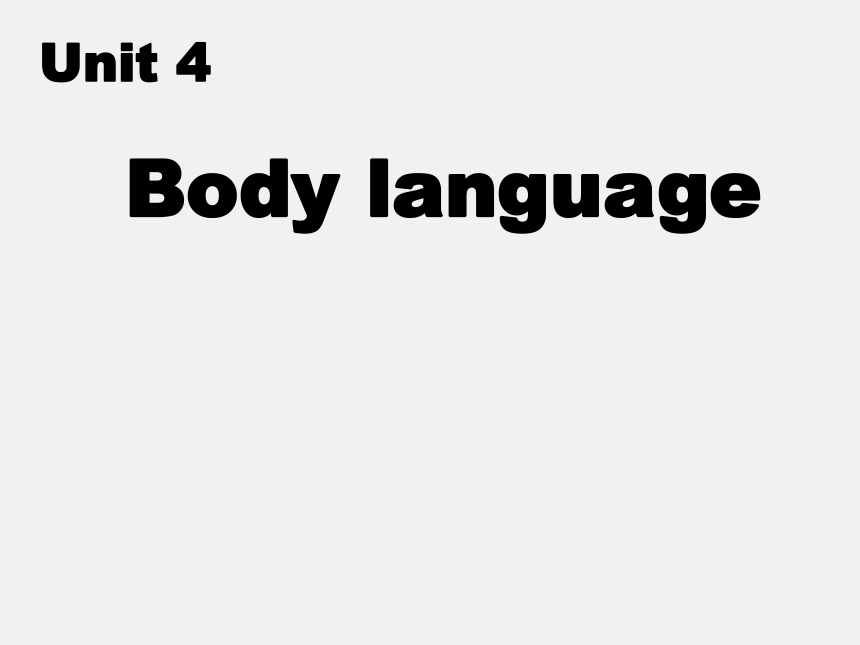
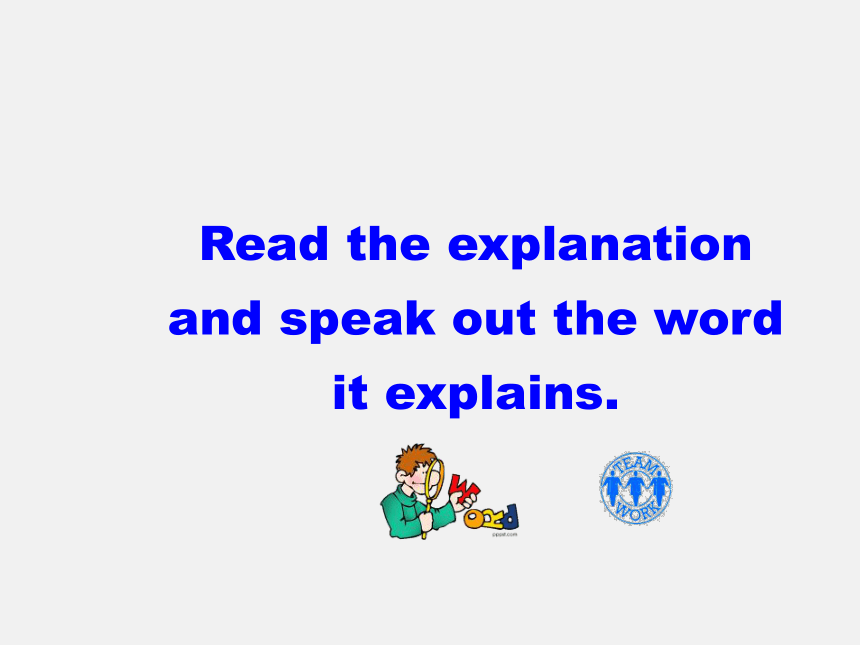
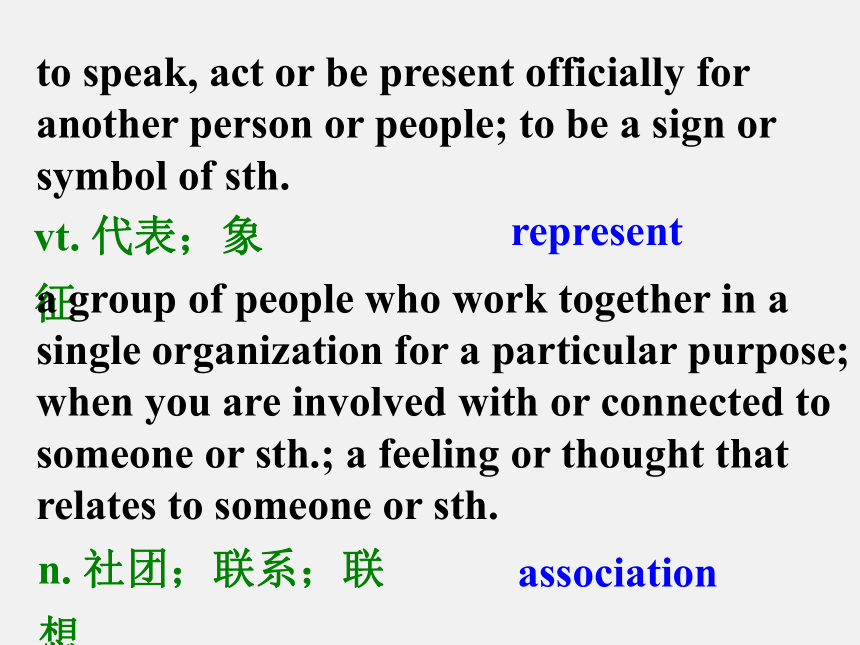
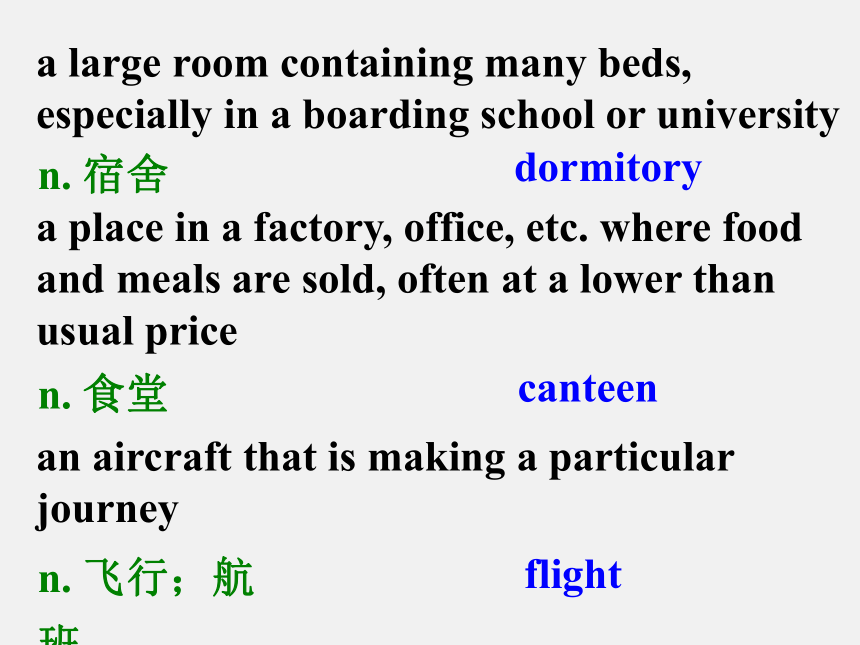

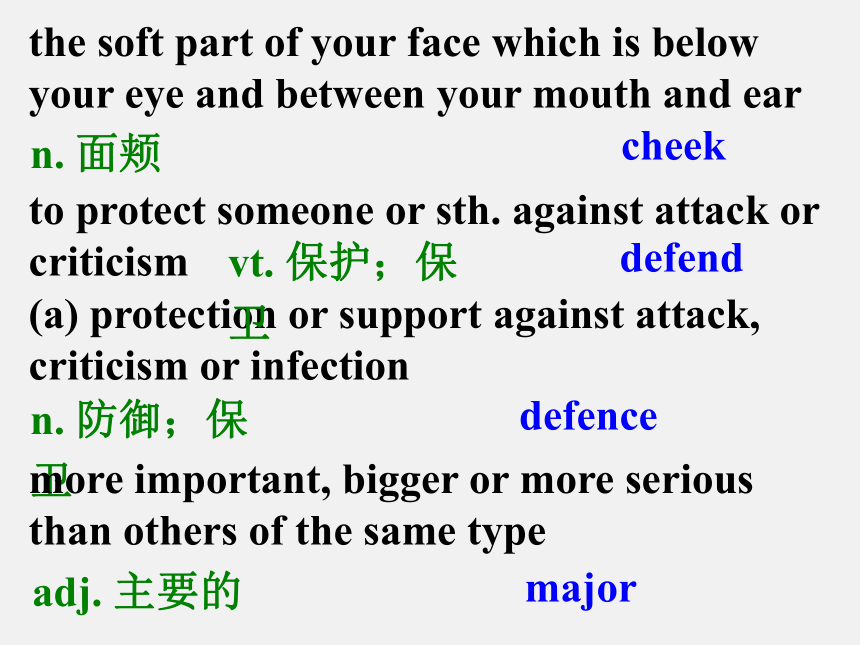
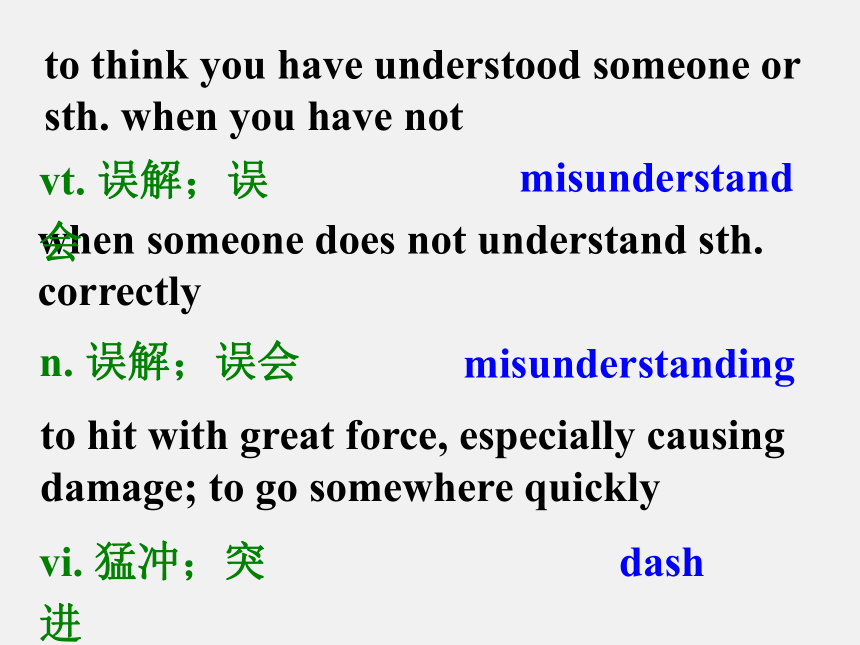
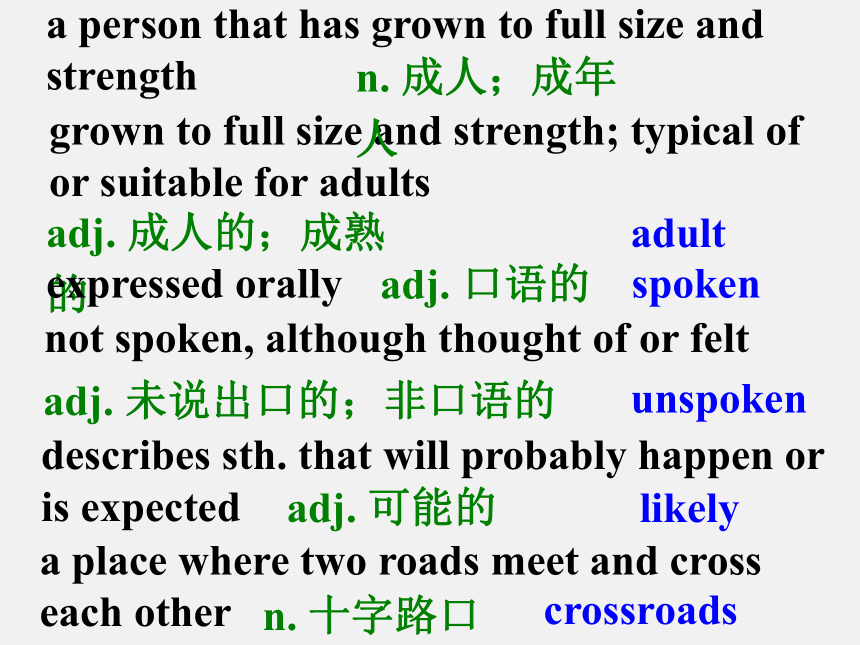
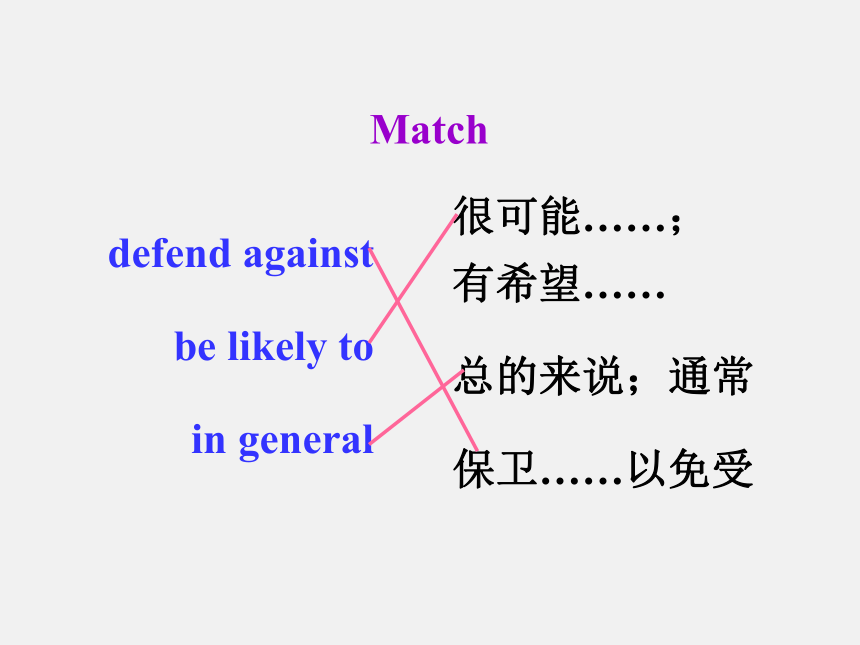
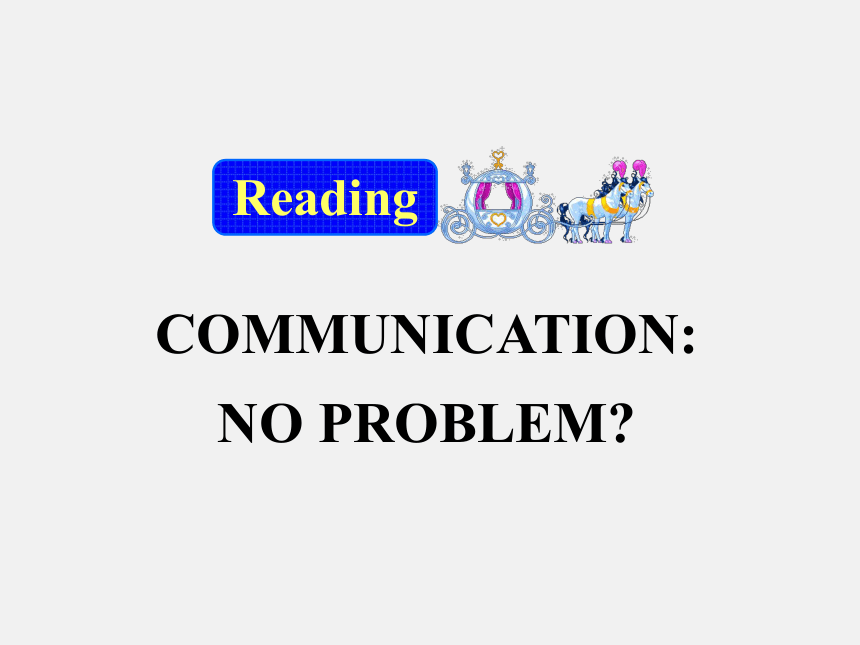
文档简介
(共40张PPT)
必修4
Before
the
class
You
are
supposed
to
be
engaged
in
the
material
and
in
whatever
it
is
that
we
are
discussing
in
class,
not
necessarily
thinking
about
getting
down
every
word
that
I
say.
I’d
like
you
to
take
active
notes
rather
than
passive
notes.
Write
down
what
can
make
you
feel
or
learn
something.
Better
attention,
better
understanding
of
the
material
if
you
are
actively
engaged.
Better
attention,
better
understanding
of
the
material
if
you
are
actively
engaged.
You
are
supposed
to
be
engaged
in
the
material
and
in
whatever
it
is
that
we
are
discussing
in
class,
not
necessarily
thinking
about
getting
down
every
word
that
I
say.
I’d
like
you
to
take
active
notes
rather
than
passive
notes.
Write
down
what
can
make
you
feel
or
learn
something.
Body
language
Unit
4
Read
the
explanation
and
speak
out
the
word
it
explains.
to
speak,
act
or
be
present
officially
for
another
person
or
people;
to
be
a
sign
or
symbol
of
sth.
vt.
代表;象征
represent
n.
社团;联系;联想
association
a
group
of
people
who
work
together
in
a
single
organization
for
a
particular
purpose;
when
you
are
involved
with
or
connected
to
someone
or
sth.;
a
feeling
or
thought
that
relates
to
someone
or
sth.
an
aircraft
that
is
making
a
particular
journey
a
place
in
a
factory,
office,
etc.
where
food
and
meals
are
sold,
often
at
a
lower
than
usual
price
n.
飞行;航班
flight
n.
食堂
canteen
n.
宿舍
dormitory
a
large
room
containing
many
beds,
especially
in
a
boarding
school
or
university
vt.
&
vi.
接近;靠近;走近
approach
n.
接近;方法;途径
to
come
near
or
nearer
to
sth.
or
someone
in
space,
time,
quality
or
amount
when
sth.
or
someone
gets
nearer
in
distance
or
time;
a
way
of
considering
or
doing
sth.
interested
in
learning
about
people
or
things
around
you
adj.
好奇的
curious
adv.
好奇地
curiously
adverb
form
of
curious
adj.
主要的
major
n.
防御;保卫
defence
(a)
protection
or
support
against
attack,
criticism
or
infection
more
important,
bigger
or
more
serious
than
others
of
the
same
type
to
protect
someone
or
sth.
against
attack
or
criticism
vt.
保护;保卫
defend
n.
面颊
cheek
the
soft
part
of
your
face
which
is
below
your
eye
and
between
your
mouth
and
ear
vi.
猛冲;突进
dash
to
hit
with
great
force,
especially
causing
damage;
to
go
somewhere
quickly
when
someone
does
not
understand
sth.
correctly
vt.
误解;误会
misunderstand
n.
误解;误会
misunderstanding
to
think
you
have
understood
someone
or
sth.
when
you
have
not
a
place
where
two
roads
meet
and
cross
each
other
describes
sth.
that
will
probably
happen
or
is
expected
adj.
可能的
likely
n.
十字路口
crossroads
adj.
未说出口的;非口语的
unspoken
not
spoken,
although
thought
of
or
felt
adj.
成人的;成熟的
adult
adj.
口语的
spoken
grown
to
full
size
and
strength;
typical
of
or
suitable
for
adults
expressed
orally
a
person
that
has
grown
to
full
size
and
strength
n.
成人;成年人
defend
against
be
likely
to
in
general
很可能……;
有希望……
总的来说;通常
保卫……以免受
Match
COMMUNICATION:
NO
PROBLEM?
Reading
To
summarize
and
remember
the
main
idea
of
the
passage.
2.
To
speak
out
the
detailed
information
of
the
passage.
3.
To
know
more
about
different
body
language
in
different
countries.
4.
To
learn
some
useful
words,
expressions
and
patterns
in
the
passage.
Objectives
Words:
represent,
curious,
approach,
defend,
major,
misunderstand,
adult,
likely
Expressions:
defend
against,
be
likely
to,
in
general
Patterns:
as
I
get
to
know
more
…
in
the
same
way
that
…
Focus
on
Skimming
for
general
idea
Which
is
the
main
idea
of
the
text?
A.
What
good
or
bad
body
language
is.
B.
Foreigners
should
follow
the
customs
of
the
country
where
they
are
visiting.
C.
Some
examples
of
cultural
body
language
in
greeting
people
and
the
importance
to
learn
body
language.
D.
An
unforgettable
experience
that
the
author
had.
Reading
Comprehension
I
Skimming
Choose
the
best
answer.
What
is
the
author’s
attitude
towards
body
language?
A.
optimistic
and
disapproving
B.
interested
but
suspicious
C.
dissatisfied
and
objective
D.
open-minded
and
tolerant
Which
of
the
following
best
shows
the
structure
of
the
text?
A.
④
①
②
③
⑤
①
②
③
④
⑤
C.
B.
①
②
③
④
⑤
①
②
③
④
⑤
D.
(Para.1)
(Para.
2~3)
(Para.
4)
(Para.
5)
Different
people
have
different
body
language.
Meet
the
visitors
at
the
airport.
Summary
of
body
language.
Match
the
main
idea
of
each
part.
Part
1.
Part
2.
Part
3.
Part
4.
People
from
different
countries
express
greetings
in
different
ways.
Reading
Comprehension
II
Skimming
Scanning
for
specific
information
Englishmen
often
stand
close
to
others
or
touch
strangers
as
soon
as
they
meet.
2.
Most
people
around
the
world
now
greet
each
other
by
kissing.
3.
Japanese
will
bow
to
others
as
greeting.
Reading
Comprehension
III
Scanning
4.
Some
body
languages
in
some
countries
are
good
while
some
countries’
body
language
are
bad.
5.
People
from
Jordan
will
move
very
close
to
you
as
you
introduce
yourself
to
them.
How
do
different
international
students
behave
when
they
greet
people?
Complete
the
chart
with
information
from
the
passage.
Reading
Comprehension
IV
Scanning
Name
Description
Body
Language
To
Whom
Tony
Garcia
everyone
no
touching
man
from
Japan
man
from
Colombia
kiss
on
the
cheek
bowing
everyone
everyone
Julia
Smith
Akira
Nagata
woman
from
Britain
Name
Description
Body
Language
To
Whom
George
Cook
to
men
to
women
shake
hands
and
kiss
twice
on
each
cheek
man
from
Canada
shaking
hands
shaking
hands
nodding
Ahmed
Aziz
Darlene
Coulon
man
from
Jordan
everyone
woman
from
France
people
she
knows
1
Is
the
author
of
this
passage
male
or
female?
How
do
you
know?
The
author
is
male.
Ahmed
Aziz
will
not
shake
hands
with
women,
but
he
shakes
hands
with
the
author.
Answer
the
following
questions.
Reading
Comprehension
V
Scanning
2
What
were
the
two
mistakes
that
the
author
noticed?
He
noticed
that
the
Colombian
man
kissed
the
British
woman,
but
in
her
culture,
a
kiss
from
a
stranger
is
not
acceptable.
He
also
noticed
that
the
Japanese
man
bowed
just
as
the
Canadian
man
started
to
shake
hands,
so
one
man’s
nose
touched
the
other
man’s
hand.
3
Who
seemed
to
prefer
to
keep
more
physical
distance
from
others?
Who
seemed
to
prefer
closer
physical
distance?
The
British
woman,
Julia,
and
probably
the
Canadian
man,
George,
seemed
to
prefer
to
keep
more
physical
distance
from
others.
The
Colombian
man,
Tony,
and
the
Jordanian
man,
Ahmed,
seemed
to
prefer
closer
physical
distance.
4
Did
any
students
have
similar
greeting
customs?
If
so,
which
ones?
Yes.
Tony
from
Colombia
and
Darlene
from
France
had
a
similar
greeting
custom
–
a
kiss.
George
from
Canada
and
Ahmed
from
Jordan
also
had
a
similar
greeting
custom
–
a
handshake,
but
Ahmed
shakes
hands
only
with
men.
5
“When
in
Rome,
do
as
the
Romans
do.”
What
do
you
think
this
famous
saying
means?
This
saying
means
that
when
we
are
in
a
certain
place,
we
should
follow
the
customs
of
the
people
who
live
in
that
place,
not
our
own
customs.
Discuss
these
questions
in
groups.
Group
Work
1
If
you
meet
a
foreigner
who
comes
up
close
to
you
to
talk,
what
countries
might
he
be
from?
How
can
you
show
him
that
you
are
uncomfortable
with
that?
Work
in
groups
of
four.
Read
the
following
questions
and
then
choose
one
to
discuss
together.
Discussion
2
If
a
girl
in
shorts
goes
into
a
Muslim
house
and
a
man
takes
her
outside
pointing
at
her
shoes
and
shorts,
what
should
she
do?
Guess
why
he
is
so
particular.
3
What
are
some
situations
where
body
language
is
the
only
form
of
communication?
Why?
Individual
activity
Another
student
and
I
went
to
the
Capital
International
Airport
to
______
some
___________
students
from
many
parts
of
the
world.
I
saw
these
students
from
different
countries
expressing
_________
in
different
ways.
Not
all
cultures
_____
each
other
the
_____
way,
nor
are
they
comfortable
in
the
same
way
with
international
greet
meet
greetings
same
I.
Retell
the
text
by
filling
in
the
following
blanks.
注:
另附
word
文档。
点击此处链接
touching
or
_________
between
people.
In
the
same
way
that
people
____________
with
spoken
language,
they
also
_______
their
feelings
using
unspoken
“language”
through
________
distance,
actions
or
________.
In
a
word,
body
language
differs
in
different
_______
and
is
widely
used
in
______________.
express
communicate
distance
posture
communication
physical
cultures
II.
Task-based
reading.
注:
另附
word
文档。
点击此处链接
Fill
in
the
blanks.
1.
A
bored
person
may
keep
looking
at
his
______
or
a
______
on
the
wall.
2.
A
person
who
feels
that
he
is
unable
to
act
to
relieve
his
boredom
may
show
signs
of
________.
watch
clock
tiredness
Self-assessment
Things
I
can
do
Evaluation
I
can
understand
the
reading
passage.
5
4
3
2
1
I’ve
learned
some
basic
knowledge
about
greetings
in
different
countries.
5
4
3
2
1
I
can
understand
and
spell
the
new
words
and
expressions
and
can
use
them
in
new
situation.
5
4
3
2
1
I
can
understand
the
sentence
patterns
and
write
new
sentences
with
them.
5
4
3
2
1
I
need
more
practice
in
________________________.
Think
about
what
we’ve
just
learnt
today.
Time
for
Reflection
Study
without
reflection
is
a
waste
of
time.
Think
in
English
After
the
class
It’s
time
to
stop
the
class
for
you
to
look
back
in
silence.
Homework
Surf
the
Internet
to
collect
more
information
about
body
language
in
different
countries.
2.
发挥想象,连词成文(50-100字).
association,
curious,
approach,
defence,
major,
misunderstanding,
adult,
unspoken,
be
likely
to,
in
general.
Thank
you!
必修4
Before
the
class
You
are
supposed
to
be
engaged
in
the
material
and
in
whatever
it
is
that
we
are
discussing
in
class,
not
necessarily
thinking
about
getting
down
every
word
that
I
say.
I’d
like
you
to
take
active
notes
rather
than
passive
notes.
Write
down
what
can
make
you
feel
or
learn
something.
Better
attention,
better
understanding
of
the
material
if
you
are
actively
engaged.
Better
attention,
better
understanding
of
the
material
if
you
are
actively
engaged.
You
are
supposed
to
be
engaged
in
the
material
and
in
whatever
it
is
that
we
are
discussing
in
class,
not
necessarily
thinking
about
getting
down
every
word
that
I
say.
I’d
like
you
to
take
active
notes
rather
than
passive
notes.
Write
down
what
can
make
you
feel
or
learn
something.
Body
language
Unit
4
Read
the
explanation
and
speak
out
the
word
it
explains.
to
speak,
act
or
be
present
officially
for
another
person
or
people;
to
be
a
sign
or
symbol
of
sth.
vt.
代表;象征
represent
n.
社团;联系;联想
association
a
group
of
people
who
work
together
in
a
single
organization
for
a
particular
purpose;
when
you
are
involved
with
or
connected
to
someone
or
sth.;
a
feeling
or
thought
that
relates
to
someone
or
sth.
an
aircraft
that
is
making
a
particular
journey
a
place
in
a
factory,
office,
etc.
where
food
and
meals
are
sold,
often
at
a
lower
than
usual
price
n.
飞行;航班
flight
n.
食堂
canteen
n.
宿舍
dormitory
a
large
room
containing
many
beds,
especially
in
a
boarding
school
or
university
vt.
&
vi.
接近;靠近;走近
approach
n.
接近;方法;途径
to
come
near
or
nearer
to
sth.
or
someone
in
space,
time,
quality
or
amount
when
sth.
or
someone
gets
nearer
in
distance
or
time;
a
way
of
considering
or
doing
sth.
interested
in
learning
about
people
or
things
around
you
adj.
好奇的
curious
adv.
好奇地
curiously
adverb
form
of
curious
adj.
主要的
major
n.
防御;保卫
defence
(a)
protection
or
support
against
attack,
criticism
or
infection
more
important,
bigger
or
more
serious
than
others
of
the
same
type
to
protect
someone
or
sth.
against
attack
or
criticism
vt.
保护;保卫
defend
n.
面颊
cheek
the
soft
part
of
your
face
which
is
below
your
eye
and
between
your
mouth
and
ear
vi.
猛冲;突进
dash
to
hit
with
great
force,
especially
causing
damage;
to
go
somewhere
quickly
when
someone
does
not
understand
sth.
correctly
vt.
误解;误会
misunderstand
n.
误解;误会
misunderstanding
to
think
you
have
understood
someone
or
sth.
when
you
have
not
a
place
where
two
roads
meet
and
cross
each
other
describes
sth.
that
will
probably
happen
or
is
expected
adj.
可能的
likely
n.
十字路口
crossroads
adj.
未说出口的;非口语的
unspoken
not
spoken,
although
thought
of
or
felt
adj.
成人的;成熟的
adult
adj.
口语的
spoken
grown
to
full
size
and
strength;
typical
of
or
suitable
for
adults
expressed
orally
a
person
that
has
grown
to
full
size
and
strength
n.
成人;成年人
defend
against
be
likely
to
in
general
很可能……;
有希望……
总的来说;通常
保卫……以免受
Match
COMMUNICATION:
NO
PROBLEM?
Reading
To
summarize
and
remember
the
main
idea
of
the
passage.
2.
To
speak
out
the
detailed
information
of
the
passage.
3.
To
know
more
about
different
body
language
in
different
countries.
4.
To
learn
some
useful
words,
expressions
and
patterns
in
the
passage.
Objectives
Words:
represent,
curious,
approach,
defend,
major,
misunderstand,
adult,
likely
Expressions:
defend
against,
be
likely
to,
in
general
Patterns:
as
I
get
to
know
more
…
in
the
same
way
that
…
Focus
on
Skimming
for
general
idea
Which
is
the
main
idea
of
the
text?
A.
What
good
or
bad
body
language
is.
B.
Foreigners
should
follow
the
customs
of
the
country
where
they
are
visiting.
C.
Some
examples
of
cultural
body
language
in
greeting
people
and
the
importance
to
learn
body
language.
D.
An
unforgettable
experience
that
the
author
had.
Reading
Comprehension
I
Skimming
Choose
the
best
answer.
What
is
the
author’s
attitude
towards
body
language?
A.
optimistic
and
disapproving
B.
interested
but
suspicious
C.
dissatisfied
and
objective
D.
open-minded
and
tolerant
Which
of
the
following
best
shows
the
structure
of
the
text?
A.
④
①
②
③
⑤
①
②
③
④
⑤
C.
B.
①
②
③
④
⑤
①
②
③
④
⑤
D.
(Para.1)
(Para.
2~3)
(Para.
4)
(Para.
5)
Different
people
have
different
body
language.
Meet
the
visitors
at
the
airport.
Summary
of
body
language.
Match
the
main
idea
of
each
part.
Part
1.
Part
2.
Part
3.
Part
4.
People
from
different
countries
express
greetings
in
different
ways.
Reading
Comprehension
II
Skimming
Scanning
for
specific
information
Englishmen
often
stand
close
to
others
or
touch
strangers
as
soon
as
they
meet.
2.
Most
people
around
the
world
now
greet
each
other
by
kissing.
3.
Japanese
will
bow
to
others
as
greeting.
Reading
Comprehension
III
Scanning
4.
Some
body
languages
in
some
countries
are
good
while
some
countries’
body
language
are
bad.
5.
People
from
Jordan
will
move
very
close
to
you
as
you
introduce
yourself
to
them.
How
do
different
international
students
behave
when
they
greet
people?
Complete
the
chart
with
information
from
the
passage.
Reading
Comprehension
IV
Scanning
Name
Description
Body
Language
To
Whom
Tony
Garcia
everyone
no
touching
man
from
Japan
man
from
Colombia
kiss
on
the
cheek
bowing
everyone
everyone
Julia
Smith
Akira
Nagata
woman
from
Britain
Name
Description
Body
Language
To
Whom
George
Cook
to
men
to
women
shake
hands
and
kiss
twice
on
each
cheek
man
from
Canada
shaking
hands
shaking
hands
nodding
Ahmed
Aziz
Darlene
Coulon
man
from
Jordan
everyone
woman
from
France
people
she
knows
1
Is
the
author
of
this
passage
male
or
female?
How
do
you
know?
The
author
is
male.
Ahmed
Aziz
will
not
shake
hands
with
women,
but
he
shakes
hands
with
the
author.
Answer
the
following
questions.
Reading
Comprehension
V
Scanning
2
What
were
the
two
mistakes
that
the
author
noticed?
He
noticed
that
the
Colombian
man
kissed
the
British
woman,
but
in
her
culture,
a
kiss
from
a
stranger
is
not
acceptable.
He
also
noticed
that
the
Japanese
man
bowed
just
as
the
Canadian
man
started
to
shake
hands,
so
one
man’s
nose
touched
the
other
man’s
hand.
3
Who
seemed
to
prefer
to
keep
more
physical
distance
from
others?
Who
seemed
to
prefer
closer
physical
distance?
The
British
woman,
Julia,
and
probably
the
Canadian
man,
George,
seemed
to
prefer
to
keep
more
physical
distance
from
others.
The
Colombian
man,
Tony,
and
the
Jordanian
man,
Ahmed,
seemed
to
prefer
closer
physical
distance.
4
Did
any
students
have
similar
greeting
customs?
If
so,
which
ones?
Yes.
Tony
from
Colombia
and
Darlene
from
France
had
a
similar
greeting
custom
–
a
kiss.
George
from
Canada
and
Ahmed
from
Jordan
also
had
a
similar
greeting
custom
–
a
handshake,
but
Ahmed
shakes
hands
only
with
men.
5
“When
in
Rome,
do
as
the
Romans
do.”
What
do
you
think
this
famous
saying
means?
This
saying
means
that
when
we
are
in
a
certain
place,
we
should
follow
the
customs
of
the
people
who
live
in
that
place,
not
our
own
customs.
Discuss
these
questions
in
groups.
Group
Work
1
If
you
meet
a
foreigner
who
comes
up
close
to
you
to
talk,
what
countries
might
he
be
from?
How
can
you
show
him
that
you
are
uncomfortable
with
that?
Work
in
groups
of
four.
Read
the
following
questions
and
then
choose
one
to
discuss
together.
Discussion
2
If
a
girl
in
shorts
goes
into
a
Muslim
house
and
a
man
takes
her
outside
pointing
at
her
shoes
and
shorts,
what
should
she
do?
Guess
why
he
is
so
particular.
3
What
are
some
situations
where
body
language
is
the
only
form
of
communication?
Why?
Individual
activity
Another
student
and
I
went
to
the
Capital
International
Airport
to
______
some
___________
students
from
many
parts
of
the
world.
I
saw
these
students
from
different
countries
expressing
_________
in
different
ways.
Not
all
cultures
_____
each
other
the
_____
way,
nor
are
they
comfortable
in
the
same
way
with
international
greet
meet
greetings
same
I.
Retell
the
text
by
filling
in
the
following
blanks.
注:
另附
word
文档。
点击此处链接
touching
or
_________
between
people.
In
the
same
way
that
people
____________
with
spoken
language,
they
also
_______
their
feelings
using
unspoken
“language”
through
________
distance,
actions
or
________.
In
a
word,
body
language
differs
in
different
_______
and
is
widely
used
in
______________.
express
communicate
distance
posture
communication
physical
cultures
II.
Task-based
reading.
注:
另附
word
文档。
点击此处链接
Fill
in
the
blanks.
1.
A
bored
person
may
keep
looking
at
his
______
or
a
______
on
the
wall.
2.
A
person
who
feels
that
he
is
unable
to
act
to
relieve
his
boredom
may
show
signs
of
________.
watch
clock
tiredness
Self-assessment
Things
I
can
do
Evaluation
I
can
understand
the
reading
passage.
5
4
3
2
1
I’ve
learned
some
basic
knowledge
about
greetings
in
different
countries.
5
4
3
2
1
I
can
understand
and
spell
the
new
words
and
expressions
and
can
use
them
in
new
situation.
5
4
3
2
1
I
can
understand
the
sentence
patterns
and
write
new
sentences
with
them.
5
4
3
2
1
I
need
more
practice
in
________________________.
Think
about
what
we’ve
just
learnt
today.
Time
for
Reflection
Study
without
reflection
is
a
waste
of
time.
Think
in
English
After
the
class
It’s
time
to
stop
the
class
for
you
to
look
back
in
silence.
Homework
Surf
the
Internet
to
collect
more
information
about
body
language
in
different
countries.
2.
发挥想象,连词成文(50-100字).
association,
curious,
approach,
defence,
major,
misunderstanding,
adult,
unspoken,
be
likely
to,
in
general.
Thank
you!
同课章节目录
